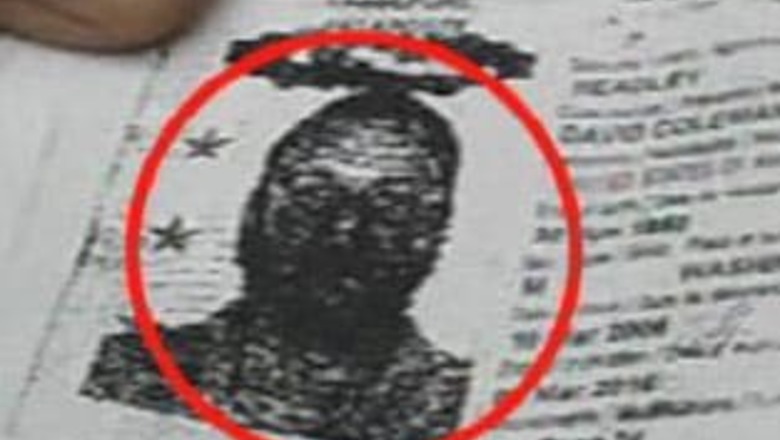
views
Washington: Pakistani-American David Coleman Headley, a key suspect in the Mumbai terror assault that left 166 people dead, used sophisticated tactics of terrorist tradecraft like code language and "electronic dead drops" and called a terror plot the Mickey Mouse Project.
According to Stratfor, that calls itself the world's leading online resource of geopolitical intelligence, Headley wasn't "merely a low-level cannon fodder-type operative".
When referring to attack plans in phone and e-mail conversations, Headley and his alleged co-conspirators reportedly called them "investment plans" or "business plans".
And when discussing the plot against Danish newspaper Jyllands-Posten, which published the Mohammed cartoons, Headley and his co-conspirators referred to it as the "Mickey Mouse Project", the "MMP" or "the Northern Project".
For the most sensitive communications and planning activities - Headley, who is charged with scouting targets for the Mumbai attacks, travelled to Pakistan to meet with Lashkar-e-Taiba (LeT) and Harkat-ul-Jihad e-Islami (HUJI) in person, a very secure way to communicate.
Headley also used a common militant communication method of creating messages and then saving them in the drafts folder of a Web mail service rather than sending the message. A second person can simply log on and read the communication in the draft folder without an e-mail having been sent.
In addition to facilitating communication, these "electronic dead drops" can be used to save notes that a terrorist operative does not want to physically carry on his person for fear of being caught with them.
According to the October 11 criminal complaint, before leaving Pakistan for the US in December 2008, Headley used this process to save a list of taskings he had received for his surveillance work in Denmark. The items listed in the complaint demonstrate the depth of the surveillance work Headley was tasked with by his contacts in Pakistan, Stratfor said.
These responsibilities included determining the best way to get the attack team ("clients") into the country, finding them a place to stay, procuring weapons ("machinery") and conducting thorough surveillance of the newspaper and its surroundings.
The extensive use of terrorist tradecraft by Headley makes it evident that he "was not merely a low-level cannon fodder-type operative", Stratfor states.
The December 7 indictment of Headley, charged with scouting targets for the 26/11 Mumbai terror attack, shows that he reportedly attended Lashkar-e-Toiba (LeT) training camps in Pakistan in February and August of 2002 and in April, August and December of 2003.
"This indicates that Headley progressed far beyond basic militant training, and it is likely that he was taught during his later training sessions the tradecraft required to conduct pre-operational surveillance for terrorist attacks and to participate in the operational planning for such attacks.
"One element of terrorist tradecraft that was evident in the indictment and the Oct 11 criminal complaint is Headley's careful use of language and of multiple methods of communications, including the use of cell phones and using long-distance calling cards, e-mail communication (using a variety of accounts) and face-to-face briefings," the global intelligence company said.
He made five extended trips to Mumbai: one in September 2006, two in February and September of 2007 and two in April and July of 2008.
If Headley were reporting to the FBI, it could also explain the very specific warnings that the US government gave to the government of India about plans to attack hotels in Mumbai in September 2008, Stratfor said.
Following the warning, the Government of India initially increased security measures at these sites, but the measures were dropped before the attacks were launched in November 2008.
The Central Intelligence Agency (CIA) has, however, denied that Headley was its agent at any point of time.
"I can't comment on an ongoing investigation, but any suggestion that this individual worked for the CIA is flat wrong," said CIA spokesperson Marie E Harf.
Headley, now in a Chicago jail, was arrested by the Federal Bureau of Investigation on October 3 while planning to go to Pakistan via Philadelphia.



















Comments
0 comment